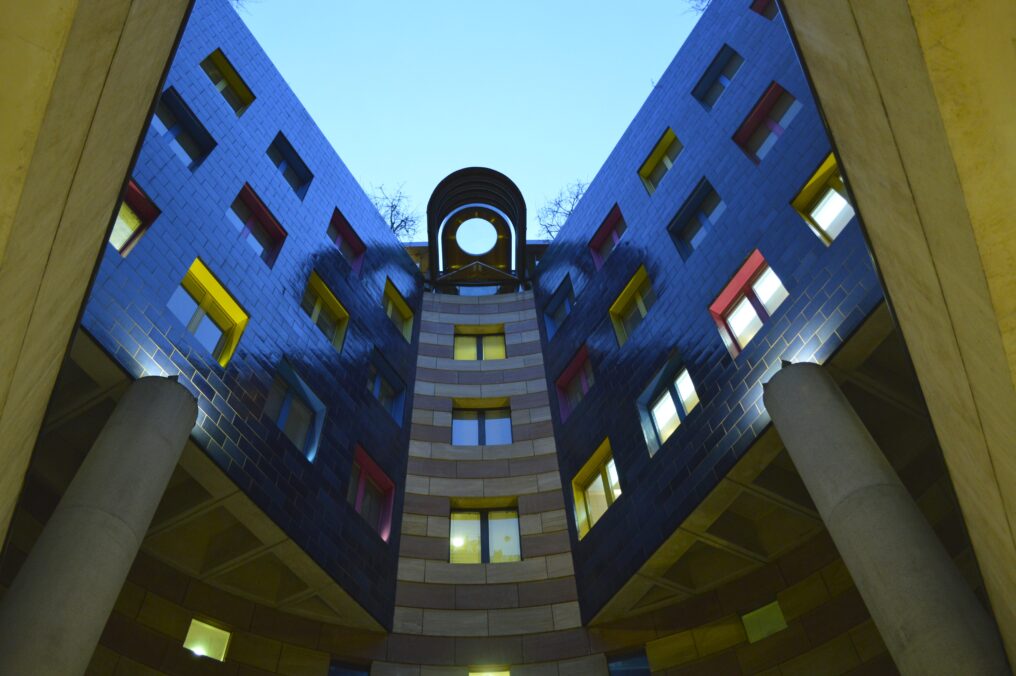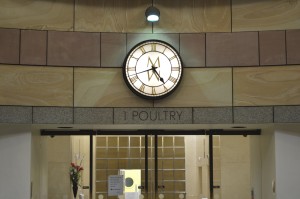
If you want to build anything in the City of London there are three hurdles to be overcome – first you have to be allowed to knock down what’s already there, then you have to planning permission for your new building, and third, you have to let the archaeologists in to dig up what’s been there before.
The classic example of this is the process for the development of Number One Poultry, the site opposite Bank junction and the Mansion House where Sir James Stirling’s post-modern construction now stands.
The story starts back in the 1950s when a developer called Rudolph Palumbo started buying the buildings on the site. He wanted to demolish the Victorian Gothic buildings that stood there, including the home of the jewellers Mappin & Webb. This project was picked up by his son Peter (now Lord) Palumbo who was given conditional planning consent to build a Mies van der Rohe-designed 18-storey bronze and glass tower on the site. (Many may not like Stirling’s design – Time Out readers voted it one of the five worst London buildings – but the van der Rohe block would have utterly changed the complexion not only of the junction, but of the entire City).
After a 15 year battle this design was finally turned down, so Palumbo came back with the Stirling design which, after a public enquiry and a case that went all the way to the House of Lords, was finally given permission. Construction started with the demolition of the Victorian buildings in 1994 and the new building was finished in 1997 with five storeys of offices, some shops on the ground floor and basement, and a restaurant with a roof garden on the top. The heritage of the site is marked by the clock from the old Mappin & Webb building which can be seen in the light well in Bucklersbury Passage and in the terracotta friezes incorporated into the new building on its Poultry-facing side.
(Stirling never saw his design built; he died in 1992 after a routine operation went wrong. He is commemorated in the Royal Institute of British Architects annual prize for the best new building of the year – The Stirling Prize.)
Now, the City of London is a small place and has been inhabited for nearly 2000 years, so if you dig any hole in the City you’re going to find archaeology. So when you’re putting in the foundations for a new block you are literally digging down through history.
As part of the planning process, developers have to have an archaeological assessment and allow archaeologists time to thoroughly excavate the site. This is done in consultation with the City of London Corporation (who are the planning authority) and the Museum of London Archaeological Service. The cost of the digs is borne by the developers, but they’re less concerned with the money and more with the time it adds to their build.
For No 1 Poultry they got round this by doing what’s called ‘top down’ construction. Rather than wait until the archeologists had finished, the builders put the steel posts in, laid the ground floor concrete, then the archeologists worked under this, while the builders built the building on top of it.
And what they discovered here was lots and lots of evidence of the Roman city that took us back to the very creation of Londinium. Finds included a timber drain from AD47 – which was until recently the earliest datable structure discovered in the City (a recent excavation just over the way at the new Bloomberg headquarters might have moved that date back a bit). They also found the remains of a pottery shop that was burned to the ground when Boudicca attacked the City in AD60, and evidence of lots of buildings from the 2nd and 3rd Centuries. On top of that, there were Saxon artefacts, the medieval great conduit, which brought fresh water into the City, and the ruins of a church called St Benet Sherehog that was destroyed in the Great Fire.



Of all the brownfield and post-industrial sites he could have built on, Palumbo chose to destroy a valuable piece of London’s heritage for his own vanity project. Odious, ego-obsessed moron who should be prosecuted for the architectural vandalism he committed.
I could not have described this act of architectural vandalism any better.
Lord Palumbo should have found another location for his pink monstrosity (can I suggest his own back garden if he likes the design so much).
The fact that the M&W building was demolished despite being listed, gives hope that some time in the future, the present ‘listed’ carbunkle will be erased and a reconstruction of the M&W building’s gothic elegance will once again adorn the location.